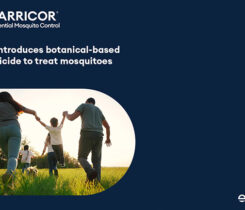Timing your insecticide applications for annual bluegrass weevil control
Ben McGraw, Ph.D., is an associate professor of turfgrass science at the State University of New York at Delhi, where he leads the teaching program in turf management and devotes a portion of his research effort to the biology and control of annual bluegrass weevil. McGraw can be reached at mcgrawba@delhi.edu for more information.
Q: What is the current range of annual bluegrass weevil and why is it spreading to new areas?
Annual bluegrass weevil causes the most damage in the metro New York City area. It can be found as far north as Quebec and Ontario, west to the Cleveland area and as far south as western North Carolina. Annual bluegrass weevil is native to the U.S. and can be found in many locations. It does not always cause damage to turf. We find it on golf courses, but in the absence of an additional stress, such as low mowing height, heat or drought, the turf does not always show damage.
One hypothesis why the annual bluegrass weevil is spreading is that it is undergoing a host shift and is now able to feed on annual bluegrass and to a lesser degree, creeping bentgrass.
Q: What are the best sampling techniques to determine the presence of annual bluegrass weevil?
Careful observation for the adults still tops the list. On warm days in spring, the adults can be seen walking from overwintering sites to closely mown greens, tees and fairways. Vacuuming is an effective and efficient way to collect adults and is gaining in popularity. Soap flushes can be used to find larvae and sometimes, early instars within the plants.
Q: What is the ideal timing for insecticide applications to control annual bluegrass weevil?
I believe the most effective insecticidal approach is to target the overwintering adults and first generation larvae. The reason adults are targeted is to prevent adult females from laying eggs. They cause little damage.
Adults have a staggered emergence following winter and the first insecticide application should be applied to coincide with peak emergence of the adults. The half-green and half-gold forsythia is a good time to apply an insecticide to control adults.
The second most effective time for control is to target the first generation larvae. Larvae cause the most damage to annual bluegrass. Younger larvae feed inside the stems of turf, causing the turf to turn yellow and thin out. Older larvae drop from the stems and reside at the soil surface where they feed on turfgrass crowns causing additional damage. Blooming of hybrid rhododendron is a good indicator of when the first generation larvae of annual bluegrass weevil are beginning to exit the plant and can be found in the thatch and soil.
The larger larvae at the soil surface can be controlled with an insecticide application. This stops these larvae from causing any more damage and prevents, or reduces the population of, a second generation of annual bluegrass weevil.
Q: What insights do you have on the resistance of some populations of annual bluegrass weevil to synthetic pyrethroids?
Annual bluegrass weevil resistance to synthetic pyrethroids is a serious problem. Entomologists are also discovering that populations of annual bluegrass weevil resistant to synthetic pyrethroids are also resistant to other insecticides.
For most courses, pyrethroids remain effective. I recommend that a superintendent make no more than one application of a synthetic pyrethroid per year to control adult annual bluegrass weevils. If a pyrethroid is applied to target annual bluegrass weevil adults, a repeat application should not be made against other insect pests later in the year (e.g. black cutworm), so that the effectiveness of the pyrethroids and, more importantly, other controls remain effective for as long as possible.
Superintendents should focus on managing a healthy turfgrass stand that can withstand some damage from annual bluegrass weevils. We may have to learn to live with a modest amount of annual bluegrass weevil damage.










